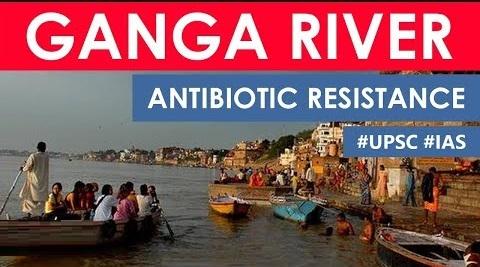Table of Contents
Context
- The government has commissioned a study to assess the microbial diversity along the entire length of the Ganga.
- The project is to be undertaken by scientists at the Motilal Nehru Institute of Technology (Allahabad), the National Environmental Engineering Research Institute (Nagpur), Sardar Patel Institute of S&T (Gorakhpur).
Project
- The study will undertake tests entire stretches of the 2,500 km Ganga river if it contain microbes that may promote “antibiotic resistance”.
- To indicate the type of “contamination
- To identify sources of Escherichia coli
- While largely harmless, some species have been linked to intestinal disease as well as aggravating antibiotic resistance.
- According to the National Mission for Clean Ganga, the aim of the project is,
- To indicate the type of contamination- sewage or industrial,
- The threat to human Health- case of antibiotic resistance,
- Identify the source of bacteria Escherichia Coli (bacteria that lives in the guts of humans and animals).
- The project is expected to last for 2 years.

World’s Rivers Contamina ted with Antibiotics
- Rivers around the world are contaminated with dangerous levels of antibiotics, with concentrations of antibiotics in some waterways exceeding safe levels by 300 times, a global team of scientists led by the University of York found.
Worried?
- Basically, superbugs are becoming more powerful and widespread than ever. Medical experts are afraid that we’re one step away from deadly, untreatable infections, since the mcr1 E.coli is resistant to that last-resort antibiotic Colistin.
- Antibiotic-resistance is passed relatively easily from one bacteria to the next, since it is transmitted by way of loose genetic material that most bacteria have in common.
The cost of antimicrobial resistance
- High human and economic cost
- GDP loss and poverty widening
- For poorer countries, the price is higher but still modest compared to the costs of an antibiotic apocalypse.
Antibiotic resistance
- Antibiotics are medicines used to prevent and treat bacterial infections.
- Antibiotic resistance occurs when bacteria change in response to the use of these medicines.
- These bacteria may infect humans and animals
- Antibiotic resistance leads to higher medical costs
- Antibiotic resistance is a consequence of evolution via natural selection.

Drug Resistance
- Concerns
- Antibiotics
- India’s action plan
NATIONAL ACTION PLAN FOR ANTIMICROBIAL RESISTANCE
- The Indian NAP focuses on six strategic priority areas, namely awareness and understanding through education, communication and training, strengthening knowledge and evidence through surveillance, infection prevention and control, optimised antimicrobial use in health, animals and food, AMRrelated research and innovation and strengthened leadership and commitment at international, national and sub-national levels.
Way Forward
- A multi-stakeholder approach, involving private industry, philanthropic groups and citizen activists is needed.
- Private pharmaceutical industries must take it upon themselves to distribute drugs in a responsible manner.
- Philanthropic charities must fund the development of new antibiotics, while citizen activists must drive awareness.
- These stakeholders must appreciate that the only way to postpone resistance is through improved hygiene and vaccinations.
Latest Burning Issues | Free PDF






















 WhatsApp
WhatsApp